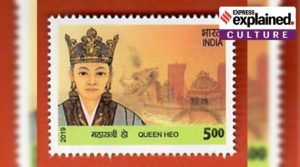Published on: October 26, 2021
QUEEN HEO HWANG-OK MEMORIAL PARK
QUEEN HEO HWANG-OK MEMORIAL PARK
What is in news : On the banks of the Sarayu in Ayodhya, acres of green space, mostly known as Ram Katha Park, have been through a major beautification exercise. Once inaugurated on November 4, the spruced-up space will be known as Queen Heo Hwang-ok Memorial Park, after a Korean queen believed to have had Indian roots
Who was Queen Heo Hwang-ok:
- She was a Korean queen
- Believed to have been born Princess Suriratna of Ayodhya, daughter of King Padmasen and Indumati.
- Padmasen ruled the ancient kingdom of Kausala, a region that extended from present-day UP to Odisha.
- Her story is described in Samguk Yusa (Memorabilia of Three Kingdoms), a 13th-century collection of legends, folktales and history of Korea’s three kingdoms — Goguryeo, Baekje and Silla — and some other regions.
- In 48 BC, the princess, then 16, travelled to Korea from the ancient land of ‘Ayuta’ and married Kim Suro, founder and King of Geumgwan Gaya in south-eastern Korea. She travelled by boat along with an entourage, having been sent by her father, who is said to have had a dream about her marrying Suro. She became the first queen of Geumgwan Gaya, believed to be located around modern-day Gimhae city in Southern Gyeonsang province. The couple are said to have had 12 children.
What led to setting up the memorial park in Ayodhya :
- In 2000, India and South Korea signed an agreement to develop Ayodhya and Gimhae as sister cities.
- The memorial space was unveiled in 2001.
- In 2016, a proposal was sent by a South Korean delegation to refurbish the existing memorial.
- The memorial now comprises Queen and King pavilions with their busts in place, and a pond to represent Princess Suriratna’s journey. According to the legend, the princess had taken a golden egg to Korea, and the park includes an egg made of granite.

